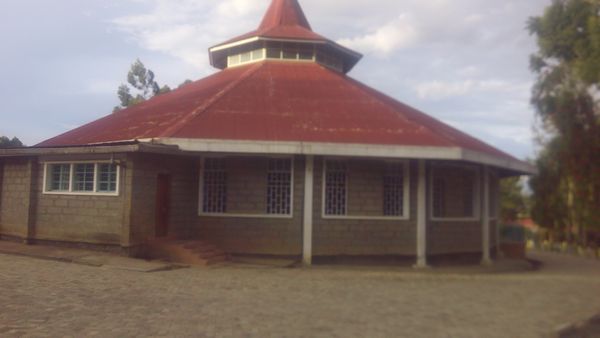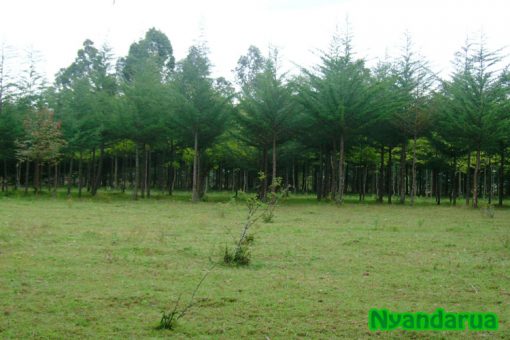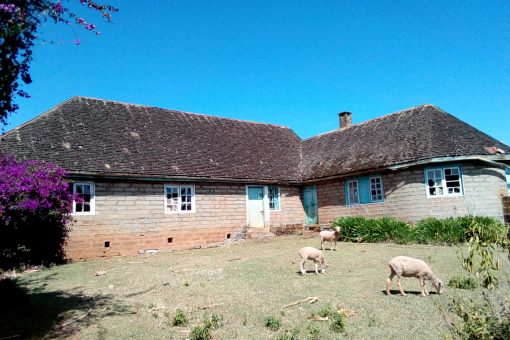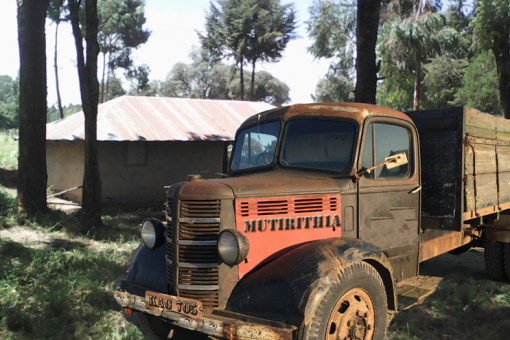OlKalou town had very few established permanent buildings. The prominent places you noticed were the two Primary schools, St. Joseph and AC Primary. There was no high school in OlKalou.
There was the Police Station. It must have been constructed during the colonial days because the buildings were old, but they were made of brick and still standing strong.
We had a Hospital / dispensary in OlKalou town not too far from the Police Station. That was the location they vacated in mid 1970s to move to the newly constructed OlKalou District Hospital, commonly known as Sheba.
The Catholic Church was another prominent compound with a number of buildings in it. The red roof of the huge round St. Mary’s sanctuary was what you spotted from the Nairobi Nyahururu Highway as you approached OlKalou town. That was the pride of OlKalou resident’s regardless of their denomination. You did not need to be of Catholic faith to be proud of that beautiful OlKalou landmark. Next to the road was the rectangular building that used to be the Sanctuary in the 1960s to early 1970s before the construction of the big round church. The other buildings were the Fathers house and the Sisters House at the back of the property. One thing I remember with great fascination is that the Catholic church was ran by two Italian priests who spoke fluent Kikuyu. Father Joseph Rigoni and Father Edward. There were also Italian nuns who also spoke fluent Kikuyu. The one I remember the most was the youngest, very pretty and energetic nun Sister Stephania. She has been there all these decades later running the Home for the Disabled Children. I have no idea where those Italians came from, when they came to OlKalou and who taught them the language. But I am glad they made OlKalou home just like the rest of us, growing with us and extending their reach deeper into the rural communities.
The railway quarters with the huge storage warehouses was also standing. That side of town looked like a mini shopping complex of its own. The railway staff quarters had huge modern houses, all painted green, the signature color of Kenya Railways Corporation. We passed right outside their houses, peeking inside if they left their doors open, as we trespassed our way to the OlKalou District Hospital. We envied the children we found playing outside those houses because we knew they did not have heavy, dirty chores like we did back on our farms. We trespassed that whole yard, crossing the railway lines and walking along them, knowing we had been warned that on a bad day, the Railway Police could arrest you and throw you in “Kandurumu” (guard room). None of us ever got arrested and nobody we knew got arrested either, coming to the conclusion it was just a myth to keep us out for our own safety.
There was also the fancy line of shops commonly referred to as Kwa Uhindi meaning Indian place. It did not make sense to us because the only Indian in OlKalou was Bhachu and his family running the only hardware store in town. To me, that did not quality an entire line of shops to be referred to as Kwa Uhindi. But anyhow, Kwa Uhindi it was. I also heard my mother refer to that line of shops as Kwa Unia. I have no idea if Unia was an Indian who owned a shop there or it was one of the British Settlers whose name she Kikuyunized, it was hard to tell. Anyhow, whether you knew this section of OlKalou as Kwa Uhindi or Kwa Unia, these shops are what you would refer to as Main Street OlKalou of the day, because the only tarmac road in OlKalou ran infront of that line of shops. The tarmac did not go any further than the last building on that strip, the building that housed the OlKalou Post Office. The tarmac ended abruptly outside the Post Office, giving way to a rough murram road that headed towards our Settlement Scheme and proceeded further to Tumaini and Ndundori. Visiting that side of town was like visiting the mall, it was good to be seen walking along those long verandas staring into shops which carried merchandise we could not afford unless it was Christmas and our parents were feeling generous.
The above were the decent landmarks of OlKalou town you could speak of, and they are still standing to this day.
The other buildings that formed rows of shops and residential houses were all very old and ran down.
I mentioned there was no High School in OlKalou. I still remember when we went dancing for Vice President Moi when he came to officially open or fund raise for OlKalou Secondary School on one very rainy day in mid 1970. For months prior to his visit, at Munyeki Primary School, my classmates and I had been practicing every day in readiness for this event when Jomo Kenyatta’s Vice President was expected in our humble little town. When he came, we were ready. We wore clean uniforms and adorned our hips with some freshly cut leaves from a special tree called Muroha, whole leaves were wide and long; when fastened around our waists with sisal twine, the leaves covered our hips almost to our knees. They were the best nature provided accessory for dancing. They flapped, bounced and twirled with every gyration of our hips, they made us look like peacocks in full splendor. We sang and praised Vice President Moi in Kikuyu, not knowing he was not from Nyumba ya Mumbi. But anyhow, we sang and danced as the heaviest downpour I had ever experienced pounded our clean shaven heads, soaking us from head to toe. When we finished, I remember standing in the rain next to some mean looking men who wore some well tailored dark suits and sheltered from the heavy downpour under huge black umbrellas. For a moment I thought Moi must be very impressed with the sophisticated, successful people of OlKalou, like the ones I was standing next to. But I wondered where they hid the rest of the days because I had never seen their kind in OlKalou before. Well, now I know they were not from OlKalou. They were the Vice President’s security detail. No wonder they did not look at us or offer to shelter us under their huge umbrellas. This is the memory that floods my mind every time I see or hear OlKalou Secondary. Anybody who remembers that function back in the 1970s?




